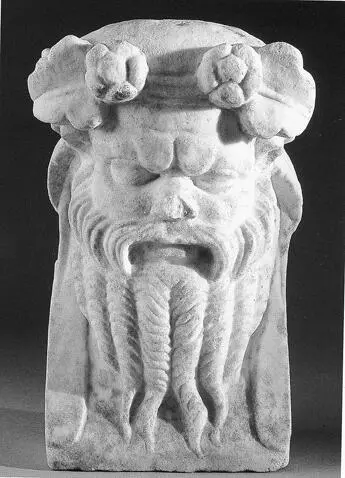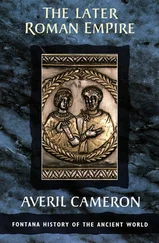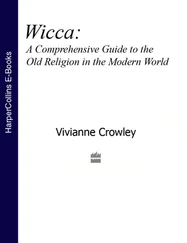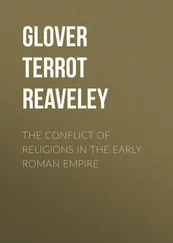Still in the private domain, it is worth considering the necropolises that developed outside the urban space, along the access roads to the city: the tombs were the domain of the Di Manes , the gods of the Netherworld, collective deities who represented the deceased once his remains had been buried. It is to these gods and the deceased that the offerings and libations made on the tombs during the feasts dedicated to the dead were destined. Here again, we are talking about ritual and religion. In the tomb of Vestorius Priscus, at the Porta Vesuviana, an altar stands above the burial chamber. Its religious character is marked by four medallions surmounted by snakes. The opening of the lead libation tube, visible on the altar’s top platform, indicates that the patron climbed onto the podium to celebrate the rituals due to the deceased, facing the city gate, in a setting adapted to the status of a tomb erected to celebrate the deceased’s social excellence. Recent excavations in the necropolis of the Porta di Nocera confirm that the Pompeians frequently visited their dead to pour perfumed oil on the ground, in front of the tomb or inside it through the libation tube, and to burn some fruits in honour of the infernal gods, according to a ritual modelled on the domestic religion: it was obviously the place and the context that gave meaning to the ritual action 9.

Fig. 8:Larary of the house of the Menander (I, 10, 4): an aedicula located in the northwest corner of the atrium that housed the gods of the house (William Van Andringa cliché).
In places of worship at the entrance to the city, on the forum, around theatres, in public buildings, in the streets, inside houses, in gardens, in necropolises ... Were the gods, innumerable and ubiquitous, in what has sometimes been presented as an amorphous permeation? Were the gods really everywhere? Certainly an illusion. The Pompeian evidence shows first of all that the same gods appear in very different contexts, with modes of action adapted to different places, sanctuaries, and groups. Was Jupiter present in the great temple dominating the forum? Certainly he can be found in some of the street sanctuaries that delimit the district of the Forenses (the inhabitants of the forum district), but likewise he was present next to the Lares in some houses ( CIL 4.6864): »Oh Jupiter very good very great, all-powerful master«, one can read on the wall of a kitchen (IX, 5, 11). In the garden of a suburban house, a man named Numerius Popidius Florus dedicated an altar to the father of the gods facing Vesuvius, in the same way that the great temple of the forum was facing the volcano. »Jupiter, the Best, the Greatest« obviously represented here the god of Vesuvius, the god of the summit, while Bacchus, god of the vineyard, was associated, on another altar placed in the eastern branch of the portico, with the great city gods of Pompeii and Herculaneum, Venus and Hercules. 10Another example is provided by the Twelve Gods, equivalent in a way to the dii omnes, »all the gods« inscriptions, who protected a district of the via dell’Abbondanza as indicated by their presence on the painting of a crossroad. Installed at the crossroads as gods of the neighbourhood, they also received a sanctuary in the garden of a house of this quarter, the House of the Chaste Lovers. Isis owned a public temple in the theatre district while a private chapel was dedicated to her in the House of the Golden Cupids and on Julia Felix’s estate. As for Venus, possessor of the great temple that dominated the port and the mouth of the Sarno, she can be found in many places, on the façades and inside the houses, and in the main lararia, overlooking the summer triclinium or in the gardens.
The gods of antiquity had this ability to multiply themselves according to human groups and fields of action. Hence the plural and shifting character of pantheons: each community or individual appropriates the power of a divinity according to their needs, their activities, the places to be protected and their place in the cityscape. Venus Pompeiana, who had given her name to the colony (Pompeii became Colonia Cornelia Veneria Pompeianorum in 80 BC), played a tutelary role for the city. This is indicated by her temple, which was established in a dominant position, between the forum and the port. It is also indicated by the reminders of her portrait on the facades of houses and shops. And we should not forget her involvement in electoral life. 11The domestic Venus intervened in another context; many graffiti confirm that she was mainly the goddess of love charm or, more often still, of sexual desire. 12For Bacchus, the story is different. The god of wine and vines had no important sanctuary in the city: a temple was reserved for him in the countryside, south of the city, a meeting place for an association of about twenty initiates, according to the number of places available on the benches of the pronaos as well as on the triclinia placed in front of the building. 13And yet, the images depicting him are numerous and constantly recur inside houses or on their exterior facades, in the city as well as on the farms. In Pompeii, economic activity was largely based on the cultivation of the vine: no political god here, but a god associated with economic and social activities, which were regularly frequented at each stage of the wine chain, from grape harvests to the excessive consumption of wine in the city’s bars and gardens, which were honoured with a toast or a libation paid on the domestic altar. In a small farm in Boscoreale (Villa Regina), two representations of Bacchus were directly linked to the patronage of the god on wine production. The first is placed near the press, the second overlooks the barrels that contained the fermenting wine: Bacchus supervised the winemaking (Fig. 8).

Fig. 9:Satyr head discovered in the larary of the peristyle of the Villa Regina farm. This is a reuse of garden furniture (Inv. 25828, Soprintendenza archeologica di Pompei ).
The production of wine and Bacchus, the desire for love and Venus, enrichment and Mercury, work and Minerva, the supervision of the house and the Lares, civic organization and Jupiter: in the cities of Vesuvius there was no domain that was not under divine supervision. On these patronages depended the future and well-being of a fragile society. The ancient gods served above all to promote the good progress of things, to assist individuals in their daily lives: »We live here; may the gods make us happy«, prays a Pompeian on the wall of the great Palestra, the training ground for the youth. 14Vested with the power to associate in multiple combinations, the gods appeared to be essential protectors: »Whoever pays me the salary of my courses must obtain from the gods from above what he asks of them«, proclaims a poorly rewarded teacher on a wall of the same building. 15It was not eternal salvation that was at issue, but the daily life of human groups and individuals. Setting out on a journey, success in the arena, domestic harmony, the protection of property, deferred payments, disappointed love, so many acts of everyday life that could motivate a prayer or an urgent request to the divinity. »Méthè, slave of Cominia, a daughter of Athella, loves Chrestus. May Venus Pompeiana be favourable to both of them and may they always live in harmony«, one finds on the wall of a house. Another graffito emanates from a gladiator who vows, if he is victorious, to offer his shield to the same Venus, the one who protected Pompeii and her inhabitants. 16And then this surprising mention written above a freshly executed painting of gladiators: »Let the anger of Venus be manifested against him who would spoil this!« These inscriptions show that the testimonies of »popular piety« often concerned the great public gods, Venus, but also Jupiter or Apollo, and not obscure divinities. The reason is simple. These gods inhabited the city, they were close and had the reputation of being powerful. And when individuals felt that their piety was not rewarded, they made it known. A Pompeian male addressed the Great Venus (in these terms, on a wall of the basilica, very close to the temple of the goddess): »Let come here whoever is in love. To Venus: I want to break the ribs with my stick and debilitate the kidneys of the goddess. If she is able to pierce my tender breast, how could I not break her head with my stick?« 17
Читать дальше














